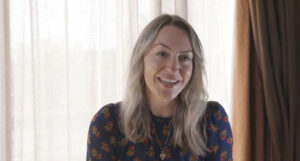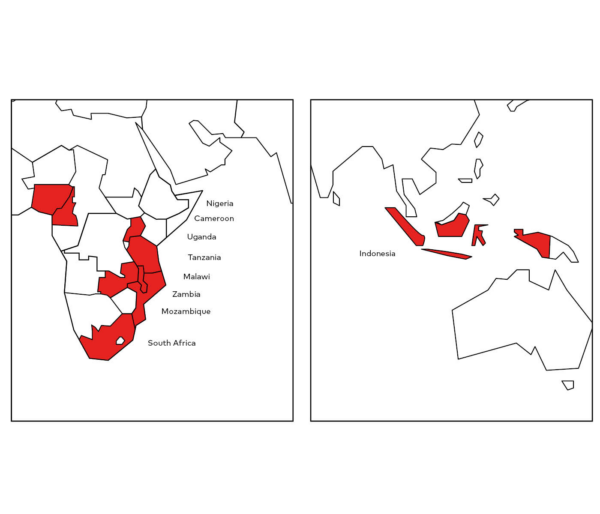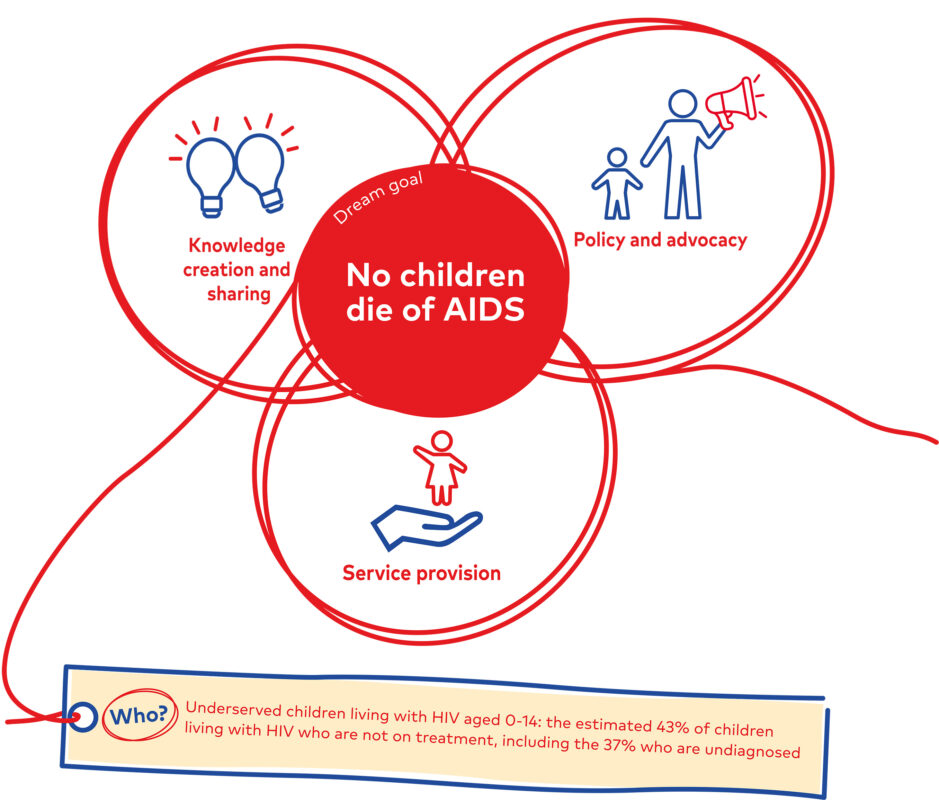
‘Aidsfonds is a true partner to community’ – Interview with Jenny Cozins
Read story

An estimated 43% of children aged 0-14 years with HIV is not on treatment, 37% is undiagnosed. They are underserved. Aidsfonds works in collaboration with governments and local partners, to test and scale up community-based HIV programmes. These are based on the Kids to Care model that is part of our Paediatric HIV programme to ensure children can live healthily with HIV. This model:
Community health workers play a central role in the model and are a crucial link at all four stages of HIV care for children: find, test, start, and stay.
We believe that to reach underserved children living with HIV, we must invest in and work closely with community-based organisations. Strengthened partnerships between global alliances, national and district governments, health systems and community structures are essential to reach all children with HIV.
To reach our dream goal that no children die of AIDS, all children with HIV should know their status, stay in care and on ART, have viral suppression and experience well-being. The programme’s Theory of Change follows three interlinked pathways: knowledge creation & sharing, service provision and policy & advocacy.
Read our Theory of Change
Communities know their children. Community health workers educate community members on paediatric HIV and move door-to-door to find children and pregnant women living with HIV.
Community health workers are trained about paediatric HIV testing and treatment, and prevention of mother-to-child transmission. They test pregnant women and children in their homes or refer them for testing in the community or health facility.
Community health workers help caregivers gain access to HIV treatment for children. Traditional and religious leaders, teachers and mentor mothers act as role models and encourage access to care. Staff at health facilities are trained to offer childfriendly services and to work closely with community health workers.
Community health workers support children to stay on HIV treatment. They promote treatment support groups for caregivers and children, and income-generating activities and savings groups for caregivers.